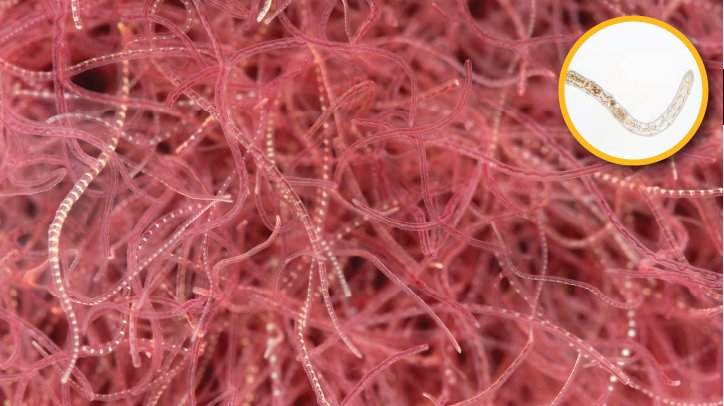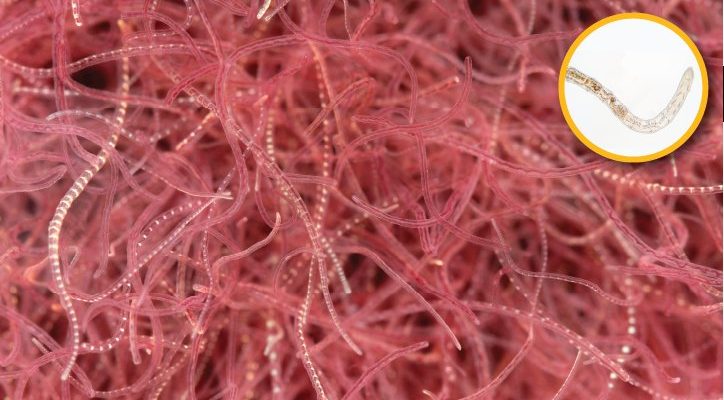
So, what’s the scoop on Tubifex worm reproduction? Well, they have a mix of intriguing mating habits, egg-laying methods, and larval development stages that are all worth exploring. If you’ve ever wanted to know how these worms create new life in the aquatic depths, stick around. I promise you’ll learn some cool facts that might just make you appreciate these critters a bit more!
How Tubifex Worms Mate
Mating for Tubifex worms is a bit different than what you might expect from land-dwelling creatures. These worms practice something called sexual reproduction, which means they have male and female members. During the mating process, these worms typically gather in groups, sometimes forming large clusters. Here’s the thing: they use a method called “copulation,” where they line up and exchange sperm.
But how do they know when it’s time to mate? Well, environmental cues play a significant role. Factors like water temperature and food availability can trigger their mating instincts. It’s fascinating to think about how these little creatures have evolved to respond to their surroundings. When conditions are just right, they get busy, ensuring the continuation of their species.
The Role of Environment in Reproduction
You might wonder why the environment is so crucial for Tubifex worm reproduction. These worms thrive in sediment-rich waters, often found in polluted areas like ponds, lakes, and sewage. Kind of ironic, right? They can’t just swim anywhere; they prefer the good stuff—a high organic matter content in the water.
This preference means that Tubifex worms are often found in environments that are less than ideal for many other aquatic species. They play a vital role in the ecosystem by helping to decompose organic matter, which improves water quality. When it comes to reproduction, having a rich habitat helps ensure that the young larvae have enough food once they hatch.
How Tubifex Worms Lay Eggs
After mating, female Tubifex worms can produce quite a few eggs—typically around 50 to 100 at a time. You might picture them laying eggs like a fish does, but it’s slightly different. These eggs are often found within cocoons or gelatinous sacs to protect them.
This cocoon structure serves multiple purposes. For one, it keeps the eggs safe from predators. Plus, it provides a nutrient source for the developing larvae. That’s right; the cocoon acts like a mini nursery until the baby worms are ready to face the world. If conditions are favorable, these cocoons can be found nestled at the bottom of their habitats, waiting for the perfect moment to hatch.
Life Cycle of Tubifex Worms
Once the eggs are laid, the adventure is just beginning. The larvae emerge a few days after hatching, depending on water conditions. In a way, this phase is like a tiny worm coming into a brand-new world. The larvae are small and not quite as developed as their adult counterparts, but they quickly start to feed on organic matter found in the water.
As they continue to grow, Tubifex larvae enter a juvenile stage before reaching maturity. This process requires a bit of time—usually about two to three weeks. During this phase, they’ll change in size and appearance, gradually resembling adult Tubifex worms.
Feeding and Growth of Larvae
Now, let’s talk about what these little larvae eat. Tubifex larvae primarily feed on bacteria, algae, and small organic particles floating in the water. This is where their role in the ecosystem really shines. By consuming decaying matter and waste, these larvae help maintain a balanced environment.
If you’re raising Tubifex worms or have them in your aquarium, ensuring they have plenty of food during this growth phase is essential. Remember, a well-fed worm is a happy worm! It’s also a good idea to mimic their natural habitat as closely as possible to keep them thriving.
Factors Influencing Reproductive Success
A range of factors can influence how successful Tubifex worms are at reproducing. Aside from providing a suitable habitat, water quality plays a significant role. High levels of pollution or toxins can cause stress and reduce their ability to reproduce.
You might also be surprised to learn that temperature affects their reproductive cycle. Warmer waters can speed up their development, while cooler temperatures can slow it down. Essentially, keeping an eye on these factors can help ensure that Tubifex worms thrive, whether you’re observing them in the wild or maintaining them in an aquarium.
Understanding Tubifex worm reproduction isn’t just for science geeks; it’s essential for anyone interested in aquatic health and ecosystems. By recognizing their mating habits, egg-laying behavior, and larval development, we gain insight into how these organisms contribute to their environment.
Whether you’re an aquarium enthusiast or a casual nature lover, appreciating the complexities of Tubifex worms can only deepen your understanding of aquatic life. So, next time you come across these worms, remember—they’re not just squiggly creatures; they’re key players in maintaining the balance of water ecosystems.

